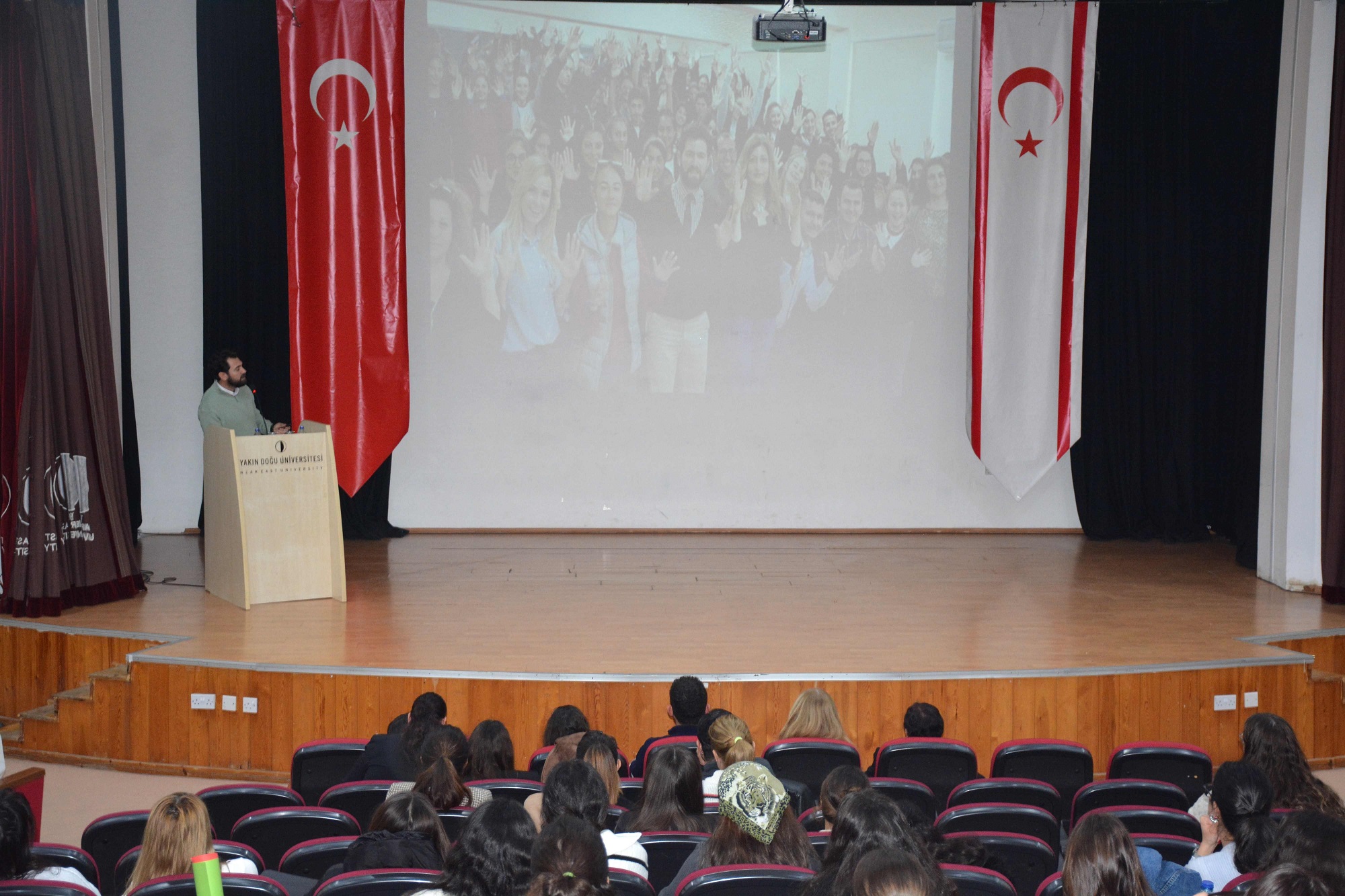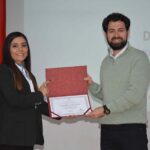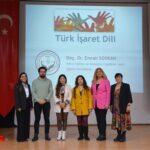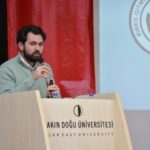
Awareness was raised about “Turkish Sign Language” in a seminar organized in collaboration with Near East University and Cyprus Hearing and Speech Impaired Foundation: There are differences in accent and interpretation in sign language, which is considered universal. Just like verbal languages, there are differences in sign language according to countries, cities and regions!
The “Turkish Sign Language Awareness Seminar” organized in collaboration with Near East University and Cyprus Hearing and Speech Impaired Foundation (KİKEV) provided important information to the participants about both effective communication with sign language and social awareness.
The seminar organized in collaboration with Near East University Dean of Students Office, Preschool Teaching Club, Atatürk Faculty of Education, Social Research and Development Center and KİKEV was held in the Grand Library with wide participation. The event emphasized the importance of establishing empathic communication with hearing impaired individuals and aimed to promote an inclusive communication culture in society.
The opening speeches of the seminar were delivered by KİKEV President Bahire Coşkuner Doğru, Social Research and Development Center President Prof. Dr. Zehra Altınay Gazi and Atatürk Faculty of Education Vice Dean Assoc. Prof. Dr. Dervişe Amca Toklu. Following the speeches, KİKEV Education Manager Assoc. Prof. Dr. Emrah Soykan made a comprehensive presentation on the basic structure of sign language, points to be considered in communication with hearing impaired individuals, and suggestions to increase awareness in society.
A More Accessible Society Goal
KİKEV President Bahire Coşkuner Doğru emphasized that sign language should be widespread and education in this field should be supported, and talked about the “I Love You, I Become Your Voice” project. She stated that the “Turkish Sign Language Level A1 Education Videos” prepared within the scope of the project will improve the communication skills of hearing impaired individuals and strengthen their integration into society. Bahire Coşkuner Doğru said, “Our project is carried out under the auspices of the Presidency, with the support of the Near East University Social Research and Development Center and Telsim, and with the sponsorship of BRT Ana Medya. The first video of the Social and Community Awareness Support Project in Sustainable Education, which will consist of 16 educational videos prepared with the support of BRT, will be released on January 5.”
Strong Steps with Academic Collaborations
Social Research and Development Center President Prof. Dr. Zehra Altınay emphasized that they have had collaborations with KİKEV for many years and stated that such events contribute to individual and community development. Emphasizing the active role of student clubs, Prof. Dr. Zehra Altınay said, “I am very proud that the recently established Preschool Teaching Student Club has started its activities with such a meaningful seminar. The club’s innovative approach and aim to raise awareness is an exemplary step.” Assoc. Prof. Dr. Dervişe Amca Toklu said, “Our club was established in October. It managed to carry out four successful events in a short time. At the end of the day, we are extremely motivated by the productive results we have achieved and the positive feedback we have received. Our team works with great dedication and I am very happy to support them wholeheartedly. Of course, our esteemed participants also contribute greatly to this success. Because one of our most important goals is to train our prospective teachers in accordance with the requirements of the 21st century and to ensure that they are integrated into society as strong, well-equipped individuals.”
Sign language is a cultural value!
KİKEV Education Manager Assoc. Prof. Dr. Emrah Soykan, who made a comprehensive presentation at the seminar, emphasized that sign language is not only a means of communication but also has a cultural value. Soykan said, “Sign language has a rich and dynamic structure supported by gestures, facial expressions and body language.” Referring to the communication methods of hearing impaired individuals, Assoc. Prof. Dr. Soykan stated that sign language is also an effective tool in addition to writing, lip reading and spoken language. Soykan stated that communication is strengthened with somatic and terminological connections in sign language. Assoc. Prof. Dr. Soykan stated that sign language is not only a means of communication but also has a cultural value, and said, “Sign language is actually like a foreign language. I would like to state that sign language, which is thought to be universal, is not universal, and there are differences in accents and interpretations. Sign language, just like verbal languages, can differ according to countries, cities and regions.”
The formation of Turkish Sign Language dates back to the Ottoman period!
Also touching on the development process of sign language in the world, Assoc. Prof. Dr. Soykan said that a sign language with a grammar and a certain structure began to develop in France in the 1700s. Assoc. Prof. Dr. Soykan stated that “Turkish Sign Language” was shaped during the Ottoman period and has survived to the present day as an original language, and reminded that the ‘Yıldız School for the Deaf’, established in 1902, was the first school for the hearing impaired in the Ottoman period, and said that studies were carried out here to develop lip-reading skills. Assoc. Prof. Dr. Soykan stated that the number of hearing impaired individuals in the TRNC was less compared to Turkey, but that these individuals should also be visible and have equal rights, and said, “There are approximately 4 million hearing impaired individuals in Turkey, the number is less in our country, but we cannot ignore them, even if there is one person only. It is very important for each individual to continue their lives with equal rights.”



